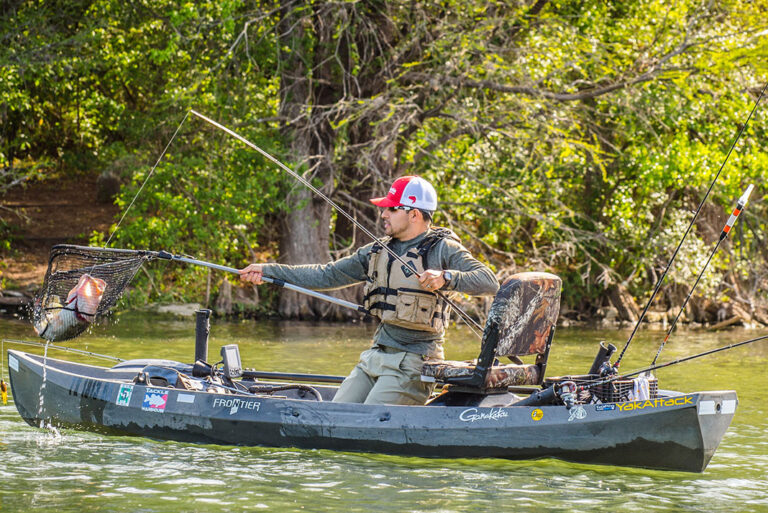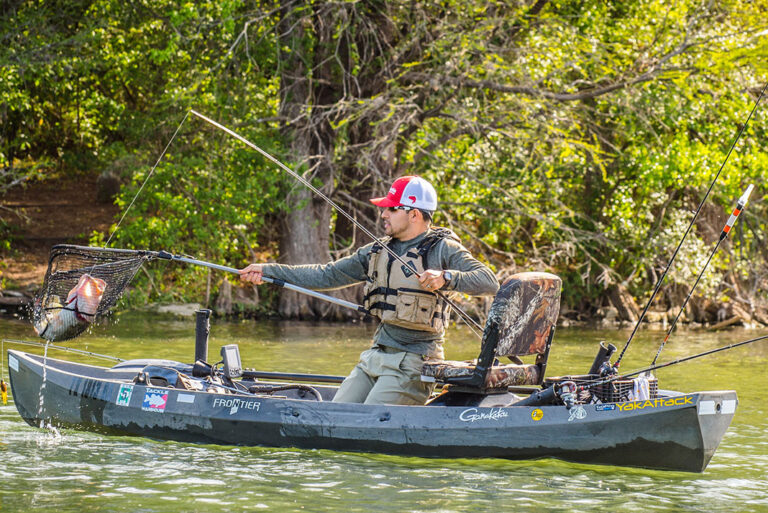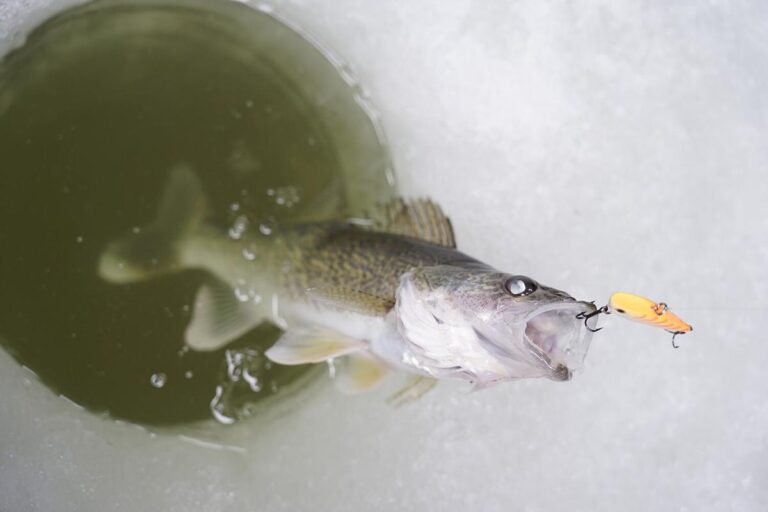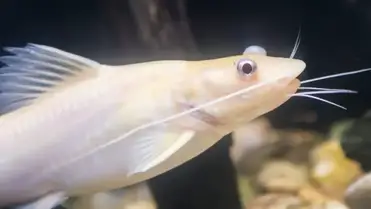Locating fish in rivers requires knowledge of the species’ habits and habitat. Fish tend to be found near structure, in eddies, and in water that is moving slower than the rest of the current.
Rivers can be challenging to navigate when it comes to finding fish, but with the proper tools and techniques, it can be a rewarding experience. A few tips on identifying where fish are likely to be can make all the difference in your catch.
Fish tend to congregate in areas with structure such as rocks, logs and other submerged objects. Look for eddies created by the current, which provide a break from the main flow of the river. Additionally, fish tend to reside in water that moves slower than the rest of the current. Understanding the species of fish you are targeting and their habitat preferences is also key. In this article, we will cover tips for locating fish in rivers to help improve your fishing techniques.

Credit: patch.com
Understanding River Currents: The Key To Finding Fish
Defining River Currents And How They Affect Fish Behavior
River currents are the flow of water in a river channel. They create a constantly changing environment for fish to live in, and understanding how they influence fish behavior is key to locating them. Here are the essential points regarding river currents and how they affect fish behavior:
- Fish are attracted to current edges: Areas where fast and slow currents meet create turbulence, which brings in food and oxygen, making it a prime feeding spot for fish. They can catch their prey more easily in these areas.
- The strength of river currents affects fish behavior: When currents are too strong, fish will usually avoid the area. On the other hand, when currents are weak, fish will have a tougher time finding food and oxygen as there is not enough flow.
- River currents also affect fish migration: Some fish species move towards faster currents during their spawning season to release their eggs. Some fish will swim against the current to reach their desired destination.
Examining The Factors That Affect The Flow Of River Currents
Various factors affect the flow of river currents. These include:
- The river’s gradient: The steeper the slope of the riverbed, the faster the water current becomes.
- The width of the river: Wider rivers tend to have slower currents compared to narrow rivers.
- Water depth: As water depth decreases, currents tend to slow down as well.
- Obstacles in the river: Rocks, boulders, and other types of debris cause turbulence, which can create areas of fast and slow currents.
- Variation in water temperature and atmospheric pressure: Water temperature and atmospheric pressure differences can cause currents to fluctuate.
Identifying Optimal Conditions For Prime Fishing Spots
Now that you know more about river currents and their impact on fish behavior, here are some prime fishing spots to look for:
- Areas with slow currents: Look for areas where water speed is diminishing, such as near river bends, downstream of rocks, or where the river widens. These locations are prime spots for fish to rest and feed.
- Eddies: These are circular water flows formed behind obstacles in the river, creating a countercurrent that brings food and oxygen to fish.
- Rapids and riffles: These areas are where fast water meets slow water. Fish love to linger in the areas where the current is broken and provides cover from predators.
- Deep pools: Large, deep pools in the river create calm areas where fish can feed and rest without being swept away by the strong current.
By understanding how river currents influence fish behavior, examining the factors that impact the flow of river currents, and recognizing prime fishing spots, you are well equipped to locate fish in rivers. Remember, however, that each river is unique, and it’s always a good idea to observe the river’s behavior before making any assumptions about where the fish are.
With these tips and some patience, you’ll be catching fish in no time!
Navigating The River Currents: Strategies For Finding The Best Fishing Spots
Navigating the river currents: strategies for finding the best fishing spots
Rivers are the perfect place to catch fish, but finding the best spots can be a bit of a challenge. Understanding how to navigate the river currents can help you find the hidden gem spots where the fish are more abundant.
Below are some strategies on how to find the best fishing spots in any river.
Reading The Waters And Deciphering Where Fish May Be Hiding
- Look for areas with calm spots and currents meeting.
- Fishes are known to gather in deep pools. Locate deep places, which are likely spots for fishes to hide.
- Observe the surface of the water for any ripples or jump fish movements, indicating feeding activity.
- Check for any visible structure under the water surface.
- Fishes often find cover in boulders or other debris in the river. Locate these spots for better chances.
Identifying The Prime Fishing Spots And Structure In The River
- Focus on the head and tail of pools, where fishes rest and feed.
- Check around logjams, rocks, undercut banks, or any other structures, as they provide shelter to fish and an excellent spot for insects to thrive, hence a prime target for feeding.
- Identify places with shade or deep cover as fishes will find shelter here.
- Look for man-made structures such as bridges and piers; they create eddies where fish gather.
Using Weather And Environmental Cues To Your Advantage
- Pay close attention to weather patterns. A warm and sunny day can make fish more active, and they will move to shallower water to feed.
- A cloudy sky or mild temperature will result in fishes venturing out of their hiding places.
- Keep in mind the time of day. Many fish species are more active during the early morning or early evening, so plan accordingly.
- Check for other environmental cues like water temperature and oxygen levels. Fish tend to congregate in areas with good oxygen supply and moderate water temperature.
Hopefully, these strategies will help you find the best fishing spots in any river. Remember to respect the environment and follow local regulations and best practices when catching fish.
Conclusion
Locating fish in rivers is no easy feat. However, with the tips outlined in this post, you can drastically increase your chances of a successful fishing trip. Remember to pay attention to the water temperature and depth, consider the time of day, and focus on the areas where fish are likely to congregate.
Additionally, using the right bait and equipment can make all the difference in the world. Take the time to research the specific type of fish you are targeting and use that knowledge to your advantage. With a little bit of patience and persistence, you’ll be reeling in the big ones in no time.
Happy fishing!






